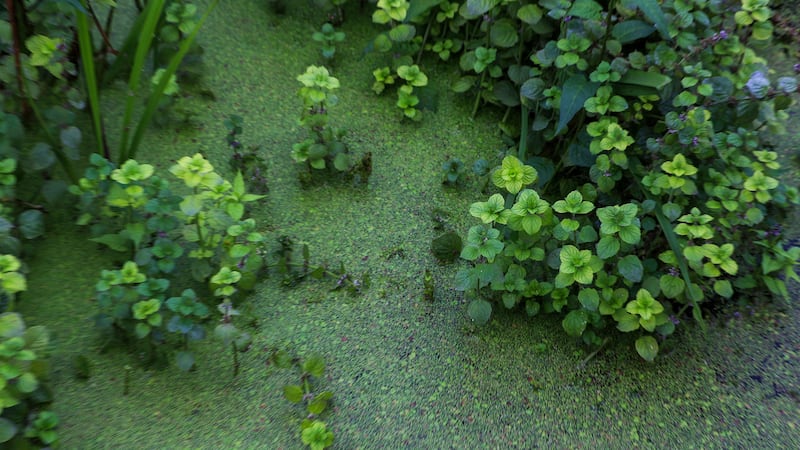Management of Lough Neagh must be under the control of one government body, the English-based Earl who owns large parts of its bed and shores said on Monday.
Nicholas Ashley-Cooper, 12th Earl of Shaftesbury, is also still open to discussing future ownership of the lough as he expressed his deep concern over the bacteria blight in the largest lake in Ireland and Britain and other waterways, including the River Bann.
Government officials are also now linking the decade-old Going for Growth strategy to boost agri-business to the continued flow of nutrients into the north's waters.
Read More
- Patrick Murphy: To clean up Lough Neagh, we need to clean up politics (premium)
- Environmentalists dispute claim that no evidence of connection between agribusiness strategy and Lough Neagh pollution
- Officials: Toxic bacteria in Lough Neagh is worst ever recorded
“I am deeply concerned about the algae bloom which has occurred on Lough Neagh as it can pose serious risks to human and animal health and I share the calls for a coordinated cross-departmental approach to tackle these environmental issues," Mr Ashley-Cooper told The Irish News.
"The Shaftesbury Estate of Lough Neagh Ltd has long advocated for the need for a centrally-managed, government body which has the authority to regulate all of the activities which impact the health and protection of the lough," he added.
"The current situation highlights how critical this has become. My position on the ownership of the lough bed and soil has remained unchanged since I took over responsibility for the company in 2005 and I remain open to discussing options for future ownership.”
The Shaftesbury estate makes money from the lough by selling licenses to sand extraction companies.
Discussions over the sale of the estate's lough assets began in 2012. A sale price of £6 million was reported.
However, following a study, senior civil servants in 2014 advised against the purchase, with the report noting that while the Earl of Shaftesbury owned much of the lough there were dozens of other interested parties.
Meanwhile, the Department of Agriculture, Environment and Rural Affairs has responded to claims by environmentalists the Going for Growth strategy was, at least in part, responsible for an increase in nitrogen and phosphorus in the lough and other waterways, helping to feed the toxic bacteria.

"The Going for Growth strategy was launched back in 2013 and sought to grow a sustainable, profitable and integrated Agri-Food supply chain within Northern Ireland," a DAERA spokesperson said.
"While environmental sustainability was a key theme within the strategy, it is clear that more needs to be done to reduce the nutrient surplus from the agricultural industry."
The spokesperson added: “However, it is clear that significant new policy interventions, underpinned by investment, will be needed if we are to secure the improvements to air and water quality and to biodiversity that people want to see and officials intend to have a suite of new, evidence-based strategies ready for consideration by returning ministers.
"The work being taken forward is benefitting from engagement and co-design with environmental and other stakeholders and the water quality steering group will include the relevant elements in their review. It will in the coming weeks, produce recommendations on the actions that would need to be taken to secure longer term improvements in water quality.”
According to the department, officials are working on "policy parameters" set by previous ministers, including on various projects to improve water quality. The department cited the Nutrient Action Programme (NAP).
The UK's Office of Environmental Protection (OEP) noted recently a review of the previous NAP has yet to be completed despite an October deadline. Further, the deadline for submitting an Environmental Improvement Plan passed at the end of July.



